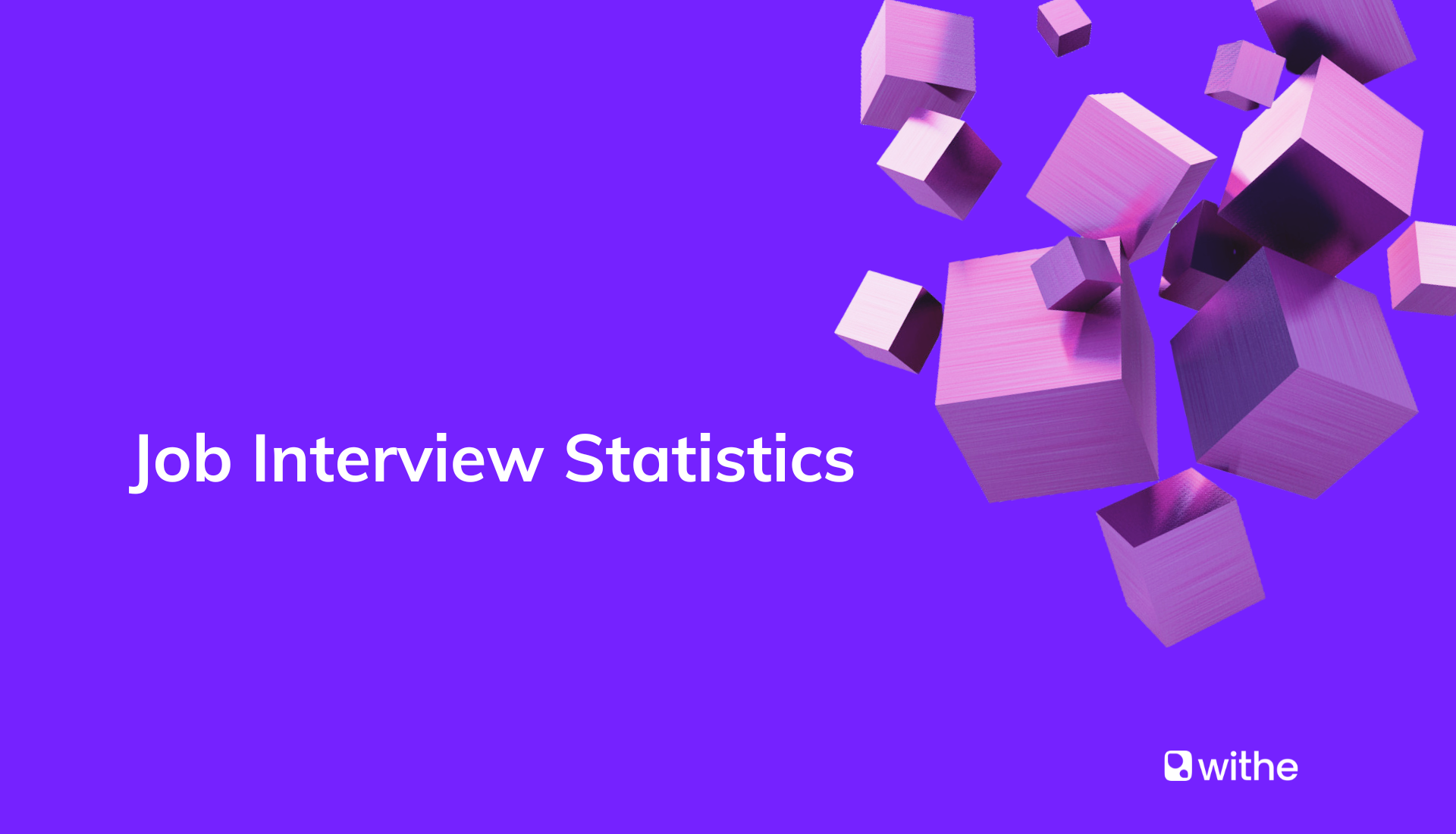Leverage Withe's hiring event platform
Streamline your seasonal and high-volume hiring process and hit your hiring targets.
This is the second chapter of our 3-part series on the most important statistics related to talent acquisition.
In our first article, we explored 30+ Job Application Statistics, uncovering insights on application drop-off rates, the optimal number of questions and job description length, as well as the trend towards mobile applications.
Now it’s time to dive into the middle of the talent acquisition funnel: Job Interviews
Today we explore the key data related to job interviews, including application-to-interview rate, the challenges of interview scheduling, the critical impact of candidate experience, candidate ghosting, and the evolving landscape of video and virtual interviews.
Leverage Withe's hiring event platform
Streamline your seasonal and high-volume hiring process and hit your hiring targets.
Key Job Interview Statistics to Know
- 8.4% of total applicants make it to the interview scheduling stage (a 34% decrease from 5 years ago!)
- 42% of recruiting teams time is spent scheduling interviews
- 62% of candidates would prefer an automated system that manages the interview process efficiently rather than lengthy back-and-forth communication
- 65% of candidates say that a bad interview experience makes them lose interest in the job
- 2.7X improved cost per hire. That’s what companies are seeing when utilising video interviewing tools
Bonus: 84% of employers who use virtual interviews report enhanced diversity in the application pool
Applicant to Interview Rate
Applicant-to-interview rate is the conversion rate from applicants to scheduled interviews.
According to Jobvite, the average applicant-to-interview conversion rate in 2023 is 8.4%, dropping from a high of 15.25% in 2016—a 34% decrease in just 5 years. (Recruitment Benchmark Report)
| Year | Average Applicant-to-Interview Rate |
|---|---|
| 2015 | 12% |
| 2016 | 15.25% |
| 2017 | 12.31% |
| 2018 | 12% |
| 2019-2022 | No data |
| 2023 | 8.4% |
Enterprise companies have a much lower applicant-to-interview rate than SMBs while they have a higher number of total applications received compared to SMBs for each interview offered. (Employ Recruiter Nation Report)
Hiring Process + Interview Scheduling
Interviews are the most valued part of the hiring process.
Realtime interviews aren’t going away anytime soon, despite the rise of asynchronous interview tools. In 2023, 94% of hiring professionals say that interviews are “very valuable” when it comes to marking the best hiring decisions. (Criteria)
That being said, time—and management of expectations—is important. In 2023, 41% of candidates expect to learn about the next steps in the hiring process during the initial interview. (CareerPlug)
The Candidate Expectations Report 2023 by Cronofy reported:
- 49% of candidates left the recruitment process when it took too long to schedule an interview, compared to 38% in 2022.
- 40% of candidates expect it to take 2-6 days after applying for a job to schedule an interview - up from 30.5% in 2021 and 33% in 2022.
- 72% of candidates say the smoothness of an interview process would affect their final decision on whether or not to take the job.
- 62% of candidates would prefer an automated system that manages the interview process efficiently rather than lengthy back-and-forth communication.
Recruiting teams spent 42% of their time scheduling interviews in 2022 - a 5% increase from the previous year. (GoodTime)
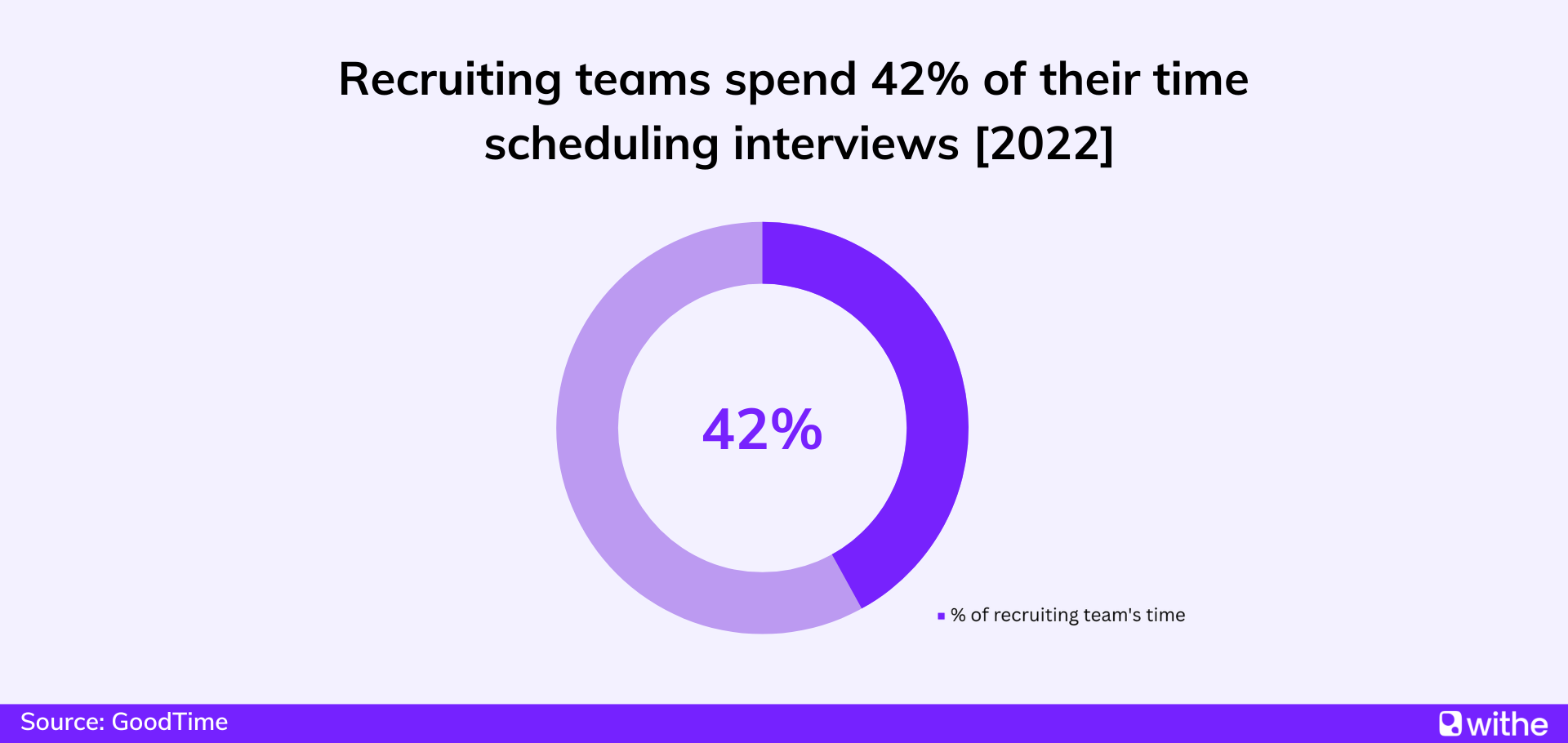
According to the Interview Scheduling Survey by Yello,
It takes between 30 minutes and 2 hours for recruiters to schedule a single interview, with 60% of recruiters finding it challenging to find a time that works for everyone.
57% of companies have a dedicated team member who solely schedules interviews, or schedules interviews in addition to other responsibilities.
When it comes to scheduling interviews, the biggest challenges in 2022 are (HR.com):
- 78% Interviewer availability
- 64% Back and forth emails
- 50% Rescheduling
This latest Interview Scheduling Survey by HR.com Research Institute also revealed:
- 56% of HR professionals consider scheduling later interviews with hiring managers or multiple interviewers one of the major challenges
- 49% of HR professionals consider making changes to the interview schedule one of the major challenges
- 31% of HR professionals consider scheduling screening interviews/first-round interviews one of the major challenges
In 2022, 50% of companies agree that efficient scheduling is key to creating a faster and simpler hiring experience for candidates (GoodTime). This makes sense, however, only 51% of recruiters use interview scheduling software. (Yello)
59% of recruiters who use interview scheduling software say they’ve saved between 2 and 10 hours per week.
There are clear benefits to automating interview scheduling:
- 75% of HR professionals agree that they improve quality of hire
- 75% of HR professionals agree that they add greater efficiency to the hiring process
- 63% of HR professionals agree that they improve the candidate experience
Withe’s hiring event platform helps recruiters streamline the interview scheduling process
Candidate Experience
We all know candidate experience is important, but how important is it? 83% of talent say a negative interview experience can change their mind about a role or company they once liked, while 87% of talent say a positive interview experience can change their mind about a role or company they once doubted. (Global Talent Trends Report)
Over half (65% to be exact) of candidates say that a bad interview experience makes them lose interest in the job. (Linkedin)
One of the top three reasons candidates around the world withdraw from the process is “My time was disrespected during the interview process”. (Talent Board)
Let’s not forget about feedback, everyone is looking for it! 94% of candidates want to receive interview feedback. (Linkedin)
Candidates who were invited to provide feedback after the interview were 65% more likely to refer others. (CandE Research Reports)
Related resource: What is candidate experience and 10 actionable ways to improve it
Candidate Ghosting
Since candidates are in the driver’s seat, recruiters often find that job seekers may drop out of the hiring process at various points. In fact, many recruiters report that candidates are simply not showing up for interviews.
According to new research from Robert Half in 2022, 39% of employers say it’s more common for job candidates to cut off communication now than two years ago.
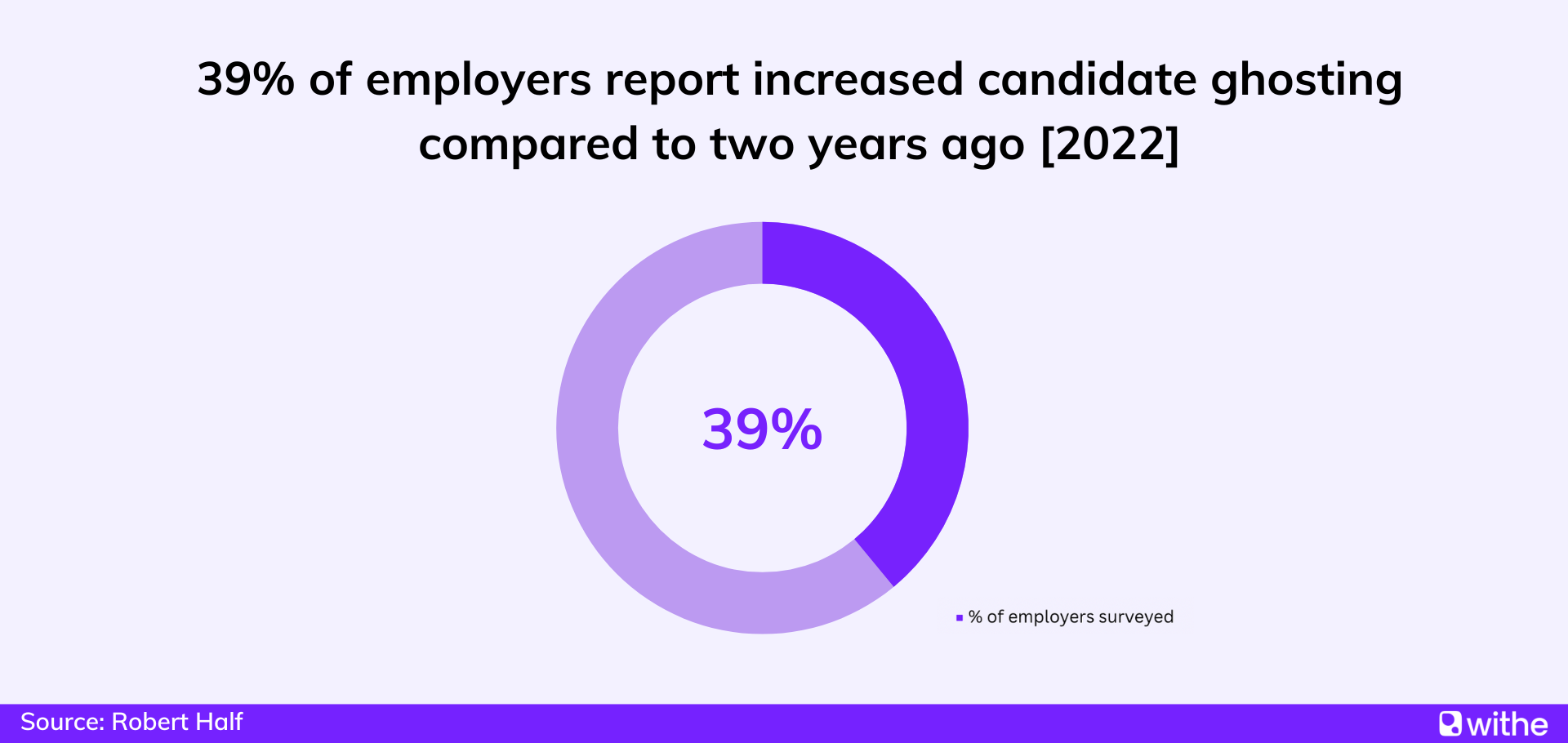
Those hiring for technology (48%) and administrative and customer support (42%) roles were mostly likely to report a surge in ghosting.
Here are the top reasons for candidates ghosting:
- 33% The interview process was poor
- 29% They received another job offer
- 23% The job was not what they expected
- 16% A mandatory return-to-office policy was implemented
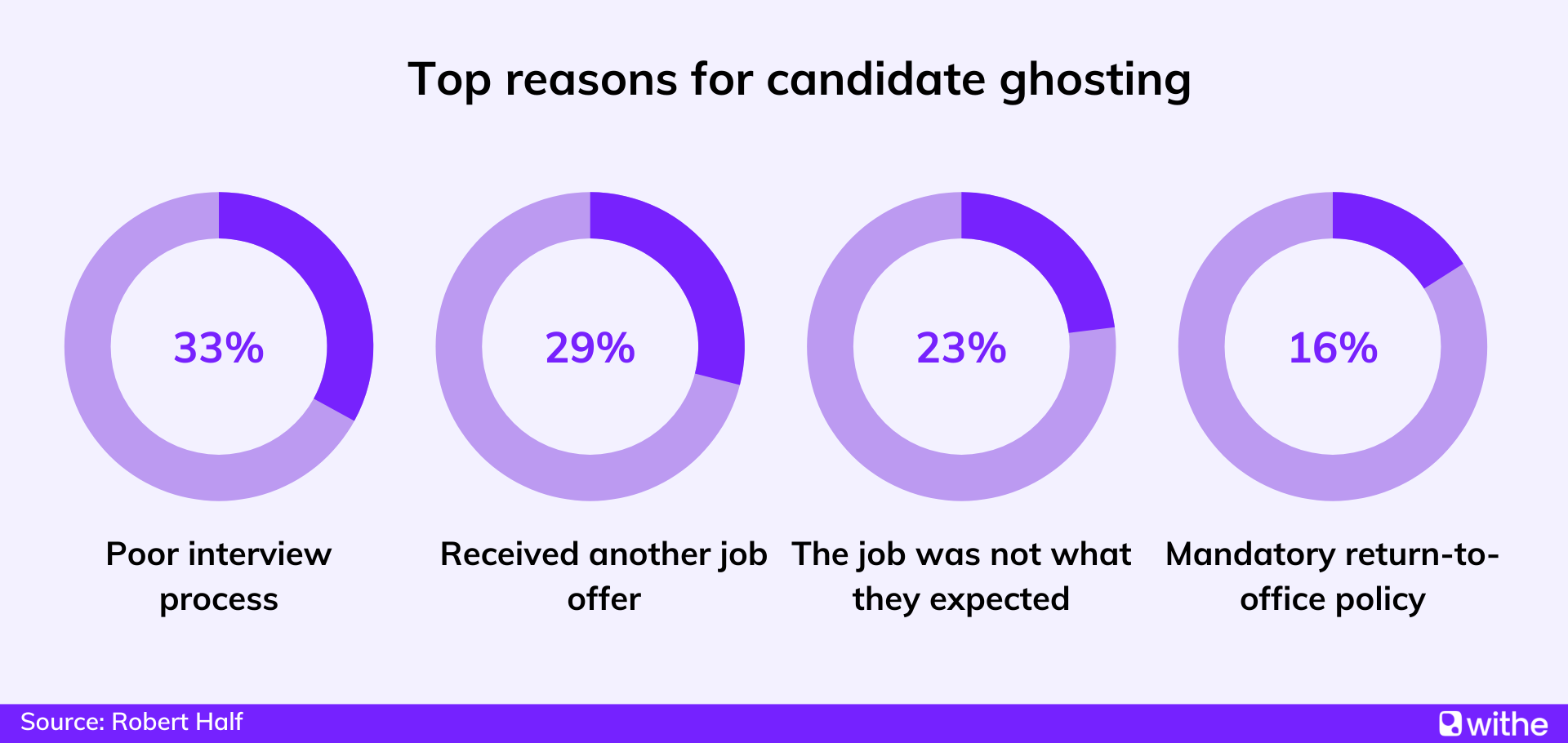
67% of candidates say employers have ghosted them after a job interview in 2023. (Greenhouse)
Related resource: Candidate ghosting: What it is and how to avoid it
Video/Virtual Interview Statistics
The use of videoconferencing technology for virtual job interviews increased during the COVID-19 pandemic. In 2021,
- 82% of employers surveyed use virtual interviews (Indeed)
- 93% of employers plan to continue using virtual interviews (Indeed)
- 86% of organizations incorporated virtual technology to interview candidates (Gartner)
According to the Survey by Criteria, in 2022,
90% of hiring professionals utilize general communication tools such as Zoom, Skype, or Teams for interviews, while 8% employ specialized video interviewing tools tailored for job interviews
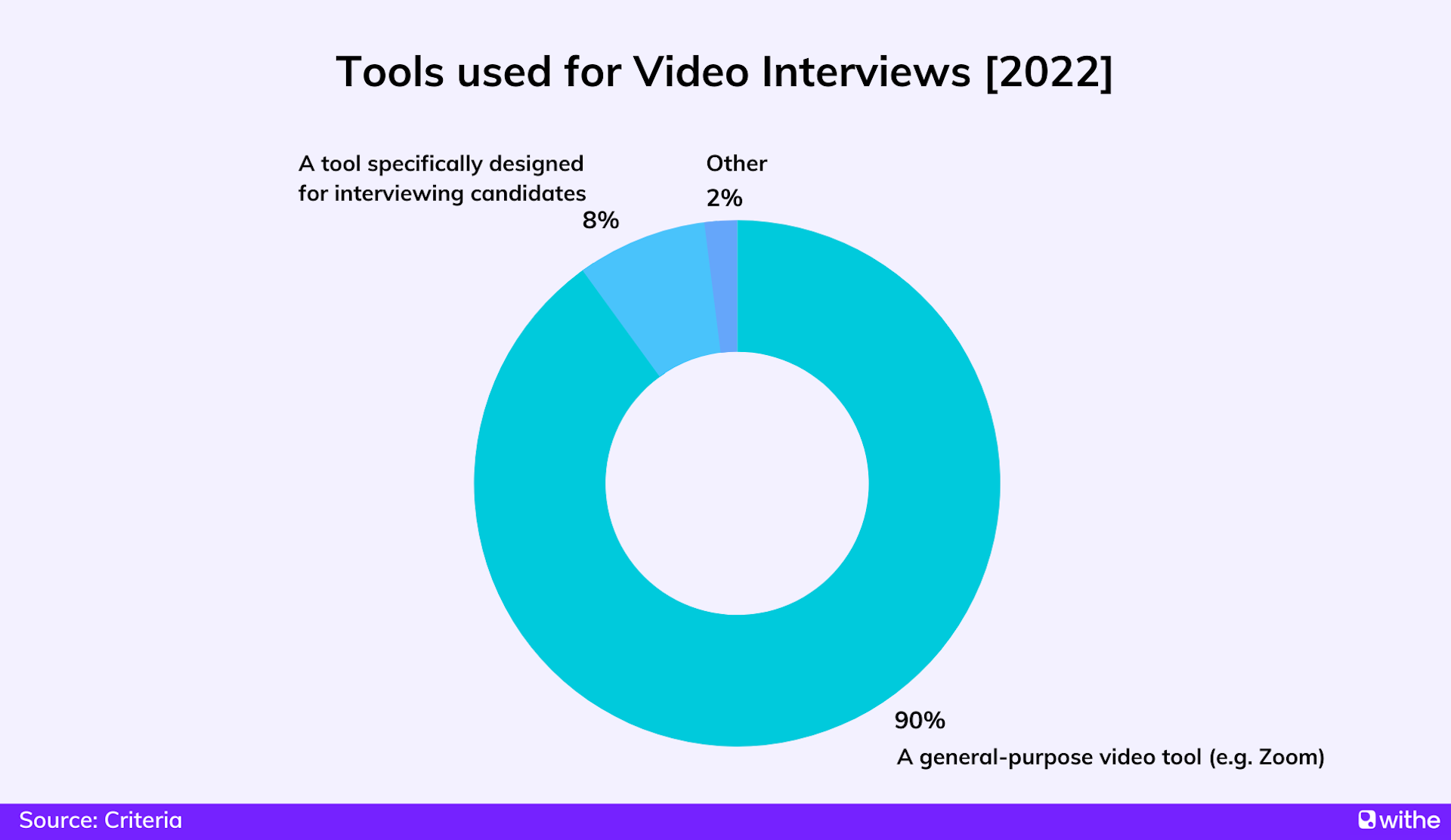
89% of our hiring professionals favor live video interviews, establishing it as the overwhelmingly popular choice, while only 9% of respondents reported using asynchronous, pre-recorded interviews.
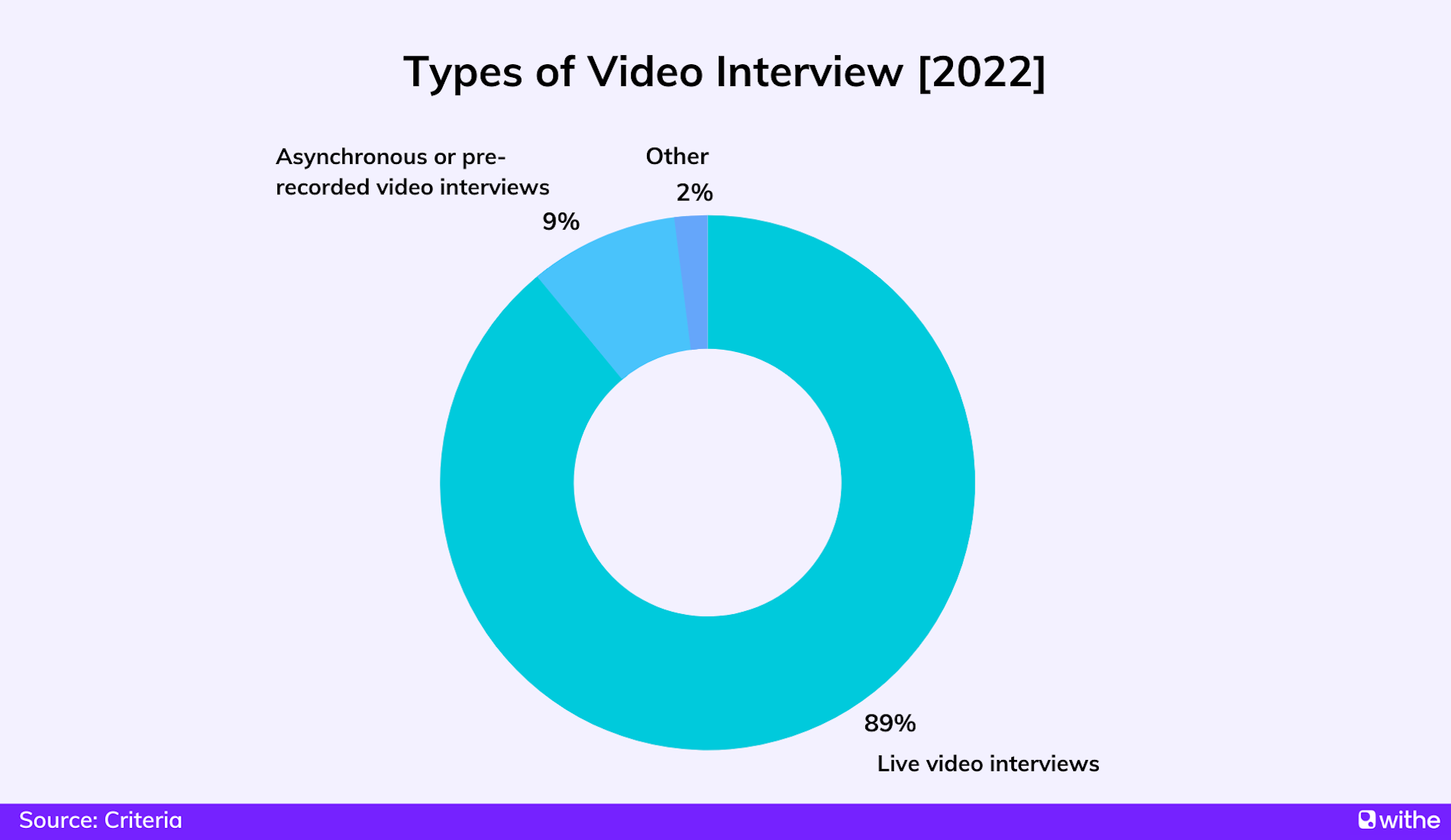
The use of video interviewing saw a surge increase in 2020 - up to 58% from 22% in 2019. Since then, it has held relatively steady, with 55% of hiring professionals today saying that they conduct video interviews.

Benefits of video interviewing are:
- Companies are 2.7 times more likely to improve their cost per hire using video interviewing tools (Aberdeen)
- 84% of employers who use virtual interviews report enhanced diversity in the application pool
According to the Candidate Survey 2023 by Recright,
- 82.4% of candidates are satisfied with video interviews as a method.
- 84% of candidates recommend video interviewing in the hiring process as a recruitment method.
It’s clear that video interviews have become a common practice in job interviews.
However, according to the latest survey conducted by American Staffing Association, 70% of all Americans prefer in-person job interviews, compared with 17% who favor video calls and 9% who prefer telephone calls.
Related resource: 7 reasons why recruiters use virtual interviews
Conclusion
In today’s fast-paced hiring landscape, seamless interview scheduling, a positive candidate experience, and adaptability to video and virtual technologies are required. Embracing these trends puts companies in a prime position to attract and retain top talent, a crucial advantage in today's competitive job market. For hiring professionals, staying updated on these interview statistics is essential. It equips them to make informed decisions that benefit both job seekers and employers.
Continue your exploration into the vital statistics of talent acquisition – we've got you covered:
- Top of the talent acquisition funnel: 30+ Job Application Statistics and 30+ Employer Brand Statistics
- Middle of the talent acquisition funnel: 50+ Candidate Experience Statistics
- Bottom of the talent acquisition funnel: 10+ Job Offer Statistics and 80+ Employee Onboarding Statistics
If you’re interested in delving deeper into articles on Job Interviews:
